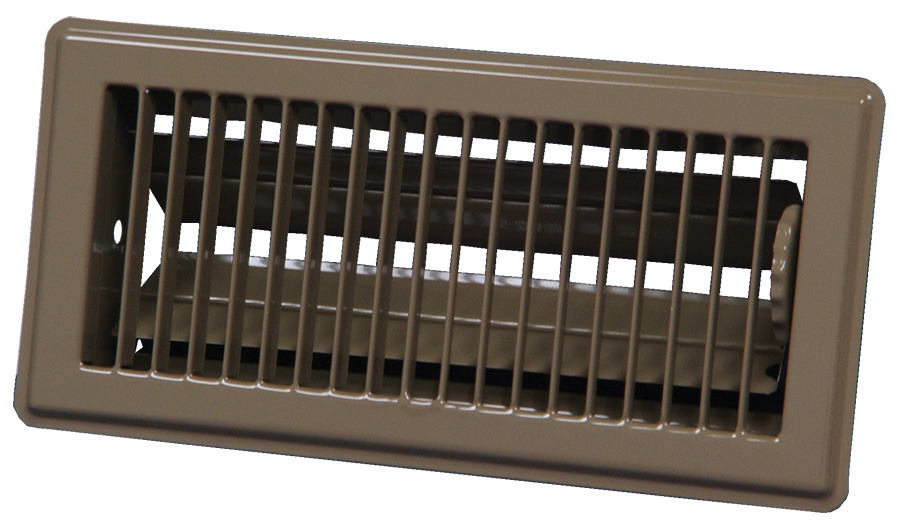
Every heating and cooling season homeowners and techs are faced with trying to figure out why one room is uncomfortable. The problem may revolve around something so simple and overlooked as the registers (commonly referred to as vents) that are installed on the HVAC system. For lack of getting too technical, I am using register in this blog post as a generic term to cover all varieties of terminal devices that would cover a supply outlet. They are really broken down into the three categories of diffusers, grilles and registers, each having their own characteristics and definitions that I won’t get into here. (Topic for another blog post maybe?)
The majority of the time very little thought is given to the performance of supply registers. The cheapest type that can be found is typically chosen, but is this always the best choice? After all, the only purpose of a supply register is to cover the rough supply openings from a duct system right? There is a little more to the purpose of what a supply register does that I’ll look at briefly here. If you’re experiencing comfort issues you might want to take a hard look at the type and style of registers that are being used with your HVAC system. If you have a magnetic scoop on any of your supply registers I can guarantee you have issues.
A well-placed supply register delivering 100 cubic feet per minute of airflow can easily condition 1,000 to 2,000 cubic feet of room air. The principle behind this is that higher velocity supply air coming out of the register entrains the air of the room and mixes these two bodies of air together. This is referred to as air entrainment. How well this air entrainment is accomplished is determined by how well the register allows air from the duct system to mix with the air in a room. As air from the duct system leaves a register it is compressed and forced through the vanes or louvers of the register. This action causes an effect similar to placing your thumb over the end of a water hose; it causes an increase in velocity as shown in the image below. When this action doesn’t occur properly the air in the room doesn’t get set into motion as it needs to.

(Note: If you have a room with hard wood inset-style registers there is a good possibility what is shown in the above image isn’t happening due to their restrictive nature.)
When it comes to proper air mixing in a home, there are two zones in any conditioned room.
1. The Air Mixing Zone is typically an area located two feet in from each wall, and the ceiling of a room.
2. The Occupied Zone is the area located inside the Air Mixing Zone. It begins about two feet inside each wall and the ceiling extending down to the floor of the room.
Knowing these two different zones exist is a key factor in understanding effective air mixing and room ventilation. The general idea is to deliver supply air into the Air Mixing Zone and select supply registers that will keep air velocity to a minimum in the Occupied Zone. When this air mixing fails to occur properly in these zones, comfort problems will prevail.
Supply register throw and spread are also large factors that come into play in the importance of supply registers and how well they distribute air in a room.
Throw is the distance from the register that the air will travel at a corresponding velocity.
Spread is the maximum width the airstream will travel at a corresponding velocity. One factor determining the amount of spread from a register is the angle of the vanes in the register.
Typical vane angles are 0˚, 22˚ and 45˚. It should also be recognized that as the throw decreases the spread increases and vice versa.
If the above characteristics have not been planned for, you might find yourself experiencing issues such as large temperature variations in a room, air that seems stagnant, or drafts caused by excessive air movement. There is a lot more that can be said on this topic but I just wanted to hit the high spots.




